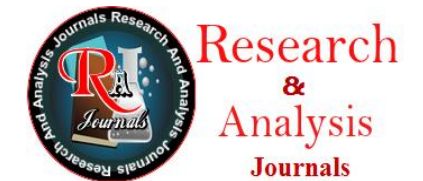The Relationship Between Public Investment To GDP Ratio And External Debt Stocks In Kenya
Downloads
Debt is a two-edged sword. External borrowing for productive investment is associated with macroeconomics stability, increased domestic savings, improved welfare and enhanced debt repayment ability; while over accumulation of debt is associated with increased repayment and debt-service costs, depressed domestic investment, crowding out of private investment and increased vulnerability to debt crisis. The paper sought to establish the relationship between public investment to GDP ratio and external debt in Kenya over the period of 1972-2012. The study used time-series data for public investment, GDP, and external debt from IMF International Financial Statistics database. All data was evaluated, cross-checked, compared and critically analyzed. To ensure that the data does not violate the assumptions of classical linear regression model (CLRM) and test for stationarity, the study tested for unit tests using Augmented Dickey-Fuller (ADF). To test for the verifiability of the estimated long run model, additional diagnostic tests, notably: heteroskedasticity, autoregressive conditional heteroskedasticity (ARCH), autocorrelation and normality, were carried out before regression was used to determine the relationship between external debt and inflation. The gauge the relationship between the external debt and growth in Kenya, a simple open macroeconomic debt growth model will be applied. Regression analysis of Ordinary Least Squares (OLS) will be used to determine the relationship between public investment to GDP ratio and external debt over the 1972 and 2012 period in Kenya. The correlation findings indicated a Spearman's correlation coefficient of -0.5618 with a P value of 0.0001, implying a negative and significant correlation. The regression results show an R square of 0.0067 indicating that 0.7 percent of variations in external debt are explained by variations in total
investment/GDP ratio, F statistic of 0.26 and a p value of 0.1828. The study recommends sustaining lower inflation rates through tight fiscal and monetary policies, financing of budget deficit from noninflationary sources, implementation of price stabilization program by subsiding basic food items, and effectively managing external debt.
Audu, I. (2004). The Impact of External Debt on Economic
Growth and Public Investment: The Case of
Nigeria. African Institute for Economic
Development and Planning (IDEP), Dakar.
Balassone F., Cunha, J., Langenus, G., Manzke, B., Pavot,
J., Prammer, D. &Tommasino, P. (2010).Fiscal
sustainability and policy implications for the euroarea, International Journal of Sustainable Economy
, 2, 210-234.
Baldacci E., Gupta, S. & Granados, C. (2009).How effective
is fiscal policy response in systemic banking
crises?, IMF, Working Paper 160
Buchanan, J, M. (1958).Public Principles of Public Debt.
Homewood, IL: Richard D. Irwin
Cecchetti, S., Mohanty, M. &Zampolli, F. (2011).The future
of public debt, in S Gokarn (ed), Challenges to
central banking in the context of the financial
crisis, New Delhi: Academic Foundation.
Checherita, C. &Rother, P. (August 2010). The Impact of
High and Growing Government Debt on Economic
Growth: An Empirical Investigation for the Euro
Area.The European Central Bank. Working Paper
Series, 1237
Clements, B., Bhattacharya, R., & Nguyen, T. Q.
(2003).External Debt, Public Investment, and
Growth in Low-Income Countries.IMF Working
Paper, 03/249
Easterly, W. &Servén, L. (2003).The Limits of Stabilization:
Infrastructure, Public Deficits, and Growth in Latin
America. Stanford University Press, Stanford, CA,
and World Bank, Washington, D.C.
Fosu A.K., Getachewb Y.Y &Ziesemer T (2012). Optimal
public investment, growth, and consumption:
Evidence from African countries. Centre for the
Study of African Economies Working Paper, 2011-
Ghura D (1997). Private investment and endogenous
growth: Evidence from Cameroon.International
Monetary Fund Working Paper.WP/97/165.
Washington, D.C
Hawke, G. (2008). On Classical Economics - by Thomas
Sowell.Economic Record,84, 267, 523-524.
Joshi, S. M. (1995). Macroeconomic Policies: Issues and
Evidence. New Delhi: Anmol Publications
Karagol, E. (2002). The Causality Analysis of External Debt
Service and GNP: The Case of Turkey, Central
Bank Review, 39-64.
Keynes, J. M. (1936). The General Theory of Employment,
Interest and Money, London: Macmillan
Khan, S (2011).Volatility of resource inflows and domestic
investment in Cameroon.African Economic
Research Consortium Research Paper, 221
Lora, E. (2007). Public Investment in Infrastructure in Latin
America: Is Debt the Culprit. Inter-American
Development Bank, Working Paper, 1-23
Mallick, S. K. (2002). Determinants of long-term growth in
India: a Keynesian approach. Progress in
Development Studies, 2, 4, 306-324.
Miller, T & Foster, J. D. (2012).Public Debt, Economic
Freedom and Growth, Chapter 3 in 2012 Index of
Economic Freedom.
Nautet, M. &Meensel, L. V. (2012).Economic impact of the
public debt. IMF Working Paper
Nelasco, S. (2012).An Economic Analysis on the External
Debt Burden of South Asian Countries.Journal of
Educational and Social Research, 2, 9, 11-22
Rogoff, K. S., Husain, A. M., A., Brooks, M. R. &Oomes,
N. (2009).Evolution and Performance of Exchange
Rates Regimes, International Monetary Fund
Occasional Paper 229, 2004.
Samake I (2008). Investment and growth dynamics: An
empirical assessment applied to Benin.
International Monetary Fund.Working Paper
WP/08/120.
UNCTAD. (2014). Economic Development in Africa:
Catalysing investment for transformative growth in
Africa.Report 2014.United Nations Conference on
Trade and Development (UNCTAD).


